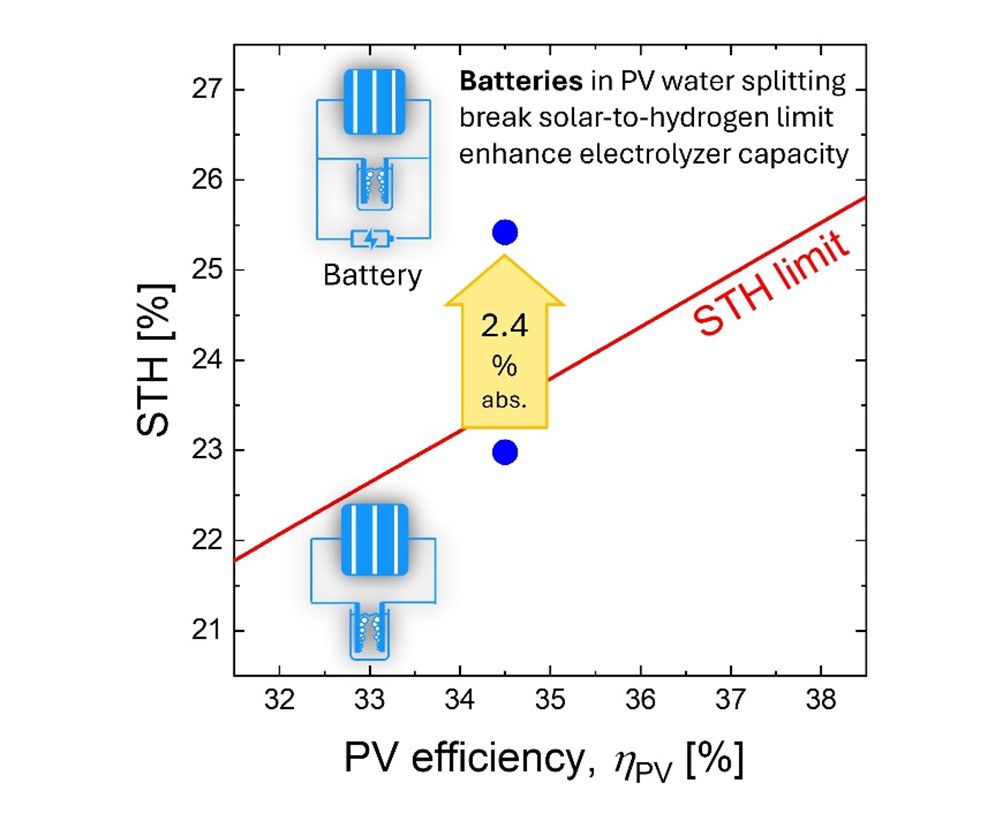Breaking limits of solar-to-hydrogen efficiency via synergy with batteries
Coupling photovoltaics (PV) with electrochemical (EC) water splitting is an established concept for storage of excess PV energy via production of green hydrogen. However, intermittent PV output presents a challenge for the stability and lifetime of EC devices in both direct coupled and power electronic assisted systems. The use of batteries is a viable way of smoothing out PV output fluctuations, which is beneficial for EC stability and ultimately lifetime. In our studies of direct coupled PV-EC-battery (PV-EC-B) systems, we have demonstrated self-sustaining operation of the device without control electronics. In addition to the expected storage function, the batteries stabilize the power coupling and improve the solar-to-hydrogen (STH) efficiency of the system despite their own power losses. We show that in a basic day-night operating cycle, an optimally coupled PV-EC system with STH efficiency of 23.0 % can reach STH efficiency of 25.4 % once battery is included. The STH efficiency increase achieved in the PV-EC-B system is 2.4 % abs. higher than the STH efficiency in the reference PV-EC system and 1.9 % abs. higher than the theoretical STH limit of the reference system determined by the EC polarization curve. The second aspect is related to the downscaling of an electrolyzer facilitated by the reduced EC power in the system with battery. We show that the battery allows a reduction of the electrolyzer capacity in the PV-EC-B system by about a factor of two, while operating at the same efficiency as the reference PV-EC system. These results are crucial for the future design, techno-economic and life cycle analysis of advanced PV-powered water splitting.
Highlights
- Optimally coupled PV-EC system with STH efficiency of 23.0 % can reach STH efficiency of 25.4 % with batteries.
- A PV-EC-B system exceeds STH efficiency limits of PV-EC system alone by 1.9 % abs.
- Batteries reduce the peak electrolyzer power enabling relative downscaling of the electrolyzer by a factor of two.
- EC cell stack and batteries operate synergistically, improving STH efficiency regardless of losses in the battery.
Further information can be found here:
https://www.sciencedirect.com/science/article/pii/S0360319925018075

